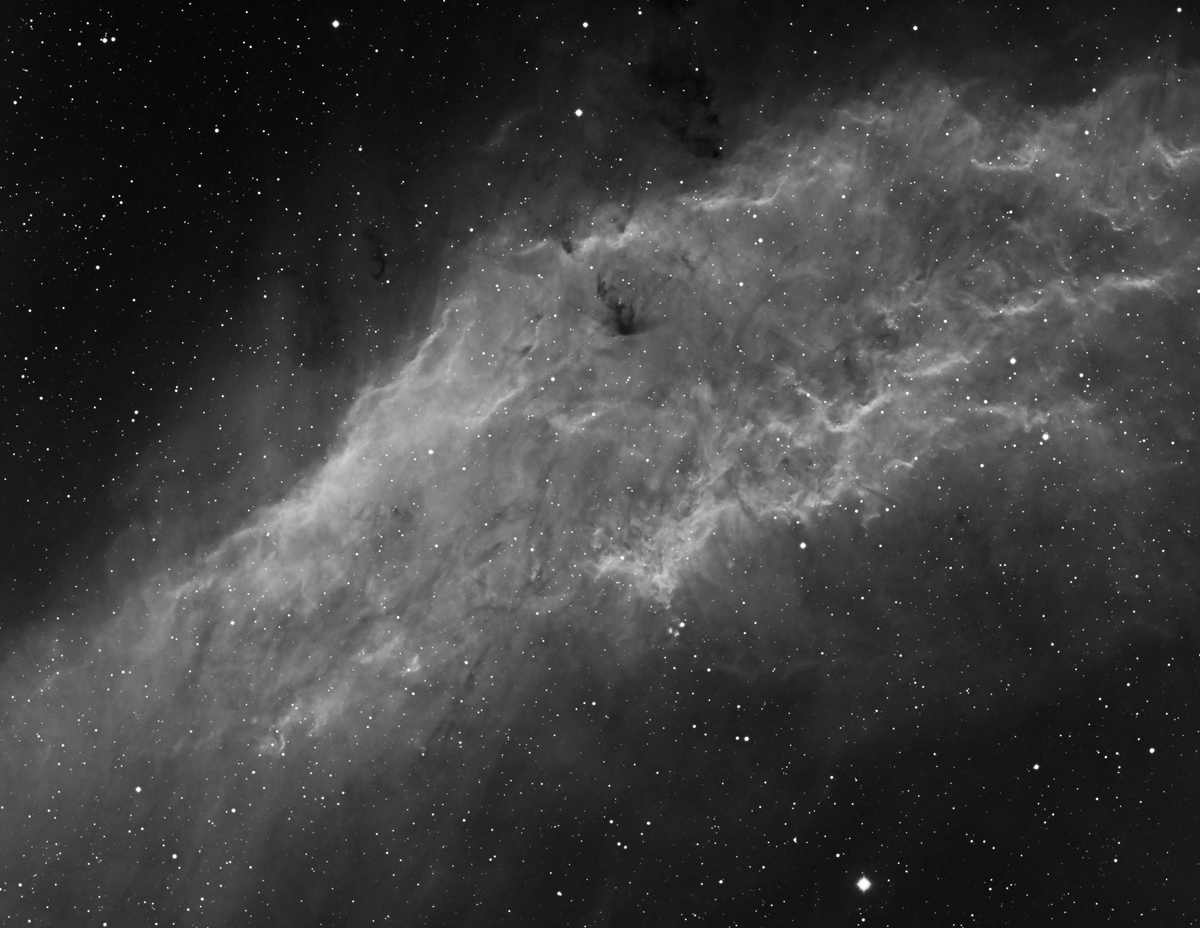 |
NGC 1499 - The California Nebula in Hydrogen-Alpha light
 |
Copyright 2009 Hap Griffin Date/Location:
November 27, 2009 Griffin/Hunter
Observatory Bethune, SC
Known as NGC 1499,
the California Nebula is so named because of its loose resemblance to the shape
of the state. Radiation from the hot blue-white main sequence star Xi
Persei, shown at the bottom-right, causes this huge cloud of hydrogen to fluoresce.
This emission nebula covers a large patch of sky over two degrees long and is
sometimes faintly visible to the naked eye from very dark locations. It
lies at a distance of 1000 light years.
This image was captured through a narrowband filter admitting only a narrow
slice of spectrum around the wavelength of glowing hydrogen. Thus it is a
monochrome (single color) image displayed as shades of grey.
Click HERE for a
full resolution version.
Click HERE for a
color version.
Camera: QSI 583wsg
Filters: Astrodon E Series Generation 2 HA (5nm BW)
CCD Temperature: -20 C
Instrument: Takahashi FSQ-106N
Focal Ratio: f/5
Mount: AP-1200
Guiding: Auto via the QSI camera's built in Off-Axis Guider
mirror and a SX Lodestar Guider
Conditions: Clear and cold with 70% moon
Weather: 40 F - 32F, still
Exposure: 160 minutes total (8 x 20 min)
Capture: CCDAutopilot 4 w/ Maxim DL Camera Control, focused automatically w/
FocusMax and Robofocus.
Processing: Frame calibrations, alignment, initial DDP with ImagesPlus v3.80.
Finishing in Photoshop CS4.